The formula of parallel angle is
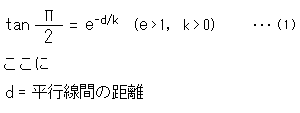
The right side can be rewritten by using symbol C, which is a combination of k and e.

Here we see what will happen if k, e or C are changed. When k is big enough in
comparison with distance d, or when e gets close to 1, the right side of the parallel angle formula approaches 1, and the parallel angle ![]() will be almost a right angle
will be almost a right angle ![]() /2.
/2.

When k is small enough in comparison with distance d, or when e is very big, the right side approaches 0, and the parallel angle ![]() will also be almost 0.
will also be almost 0.

And by using parameter C,

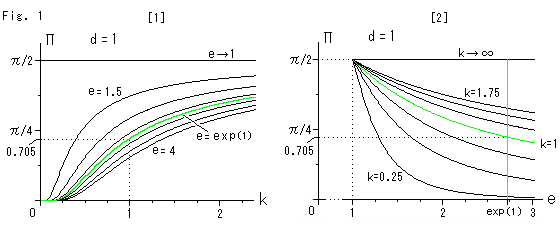
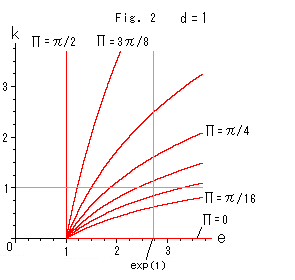
Fig. 1 above shows relations among k, e and parallel angle ![]() when d is fixed at 1. [1] is relations between k and parallel angle
when d is fixed at 1. [1] is relations between k and parallel angle ![]() at every e. [2] is relations between e and parallel angle
at every e. [2] is relations between e and parallel angle ![]() at every k.
at every k.
Fig. 2 left shows relations between k and e at everyparallel angle ![]() when d is fixed at 1.
when d is fixed at 1.
Fig. 3 below is 3-D graphs showing the combination of Fig. 1 and 2. The two figures are the same viewed from different direction

Fig. 4 below is relations between d and parallel angle ![]() . e is fixed in [1] and k is fixed in [2].
. e is fixed in [1] and k is fixed in [2].
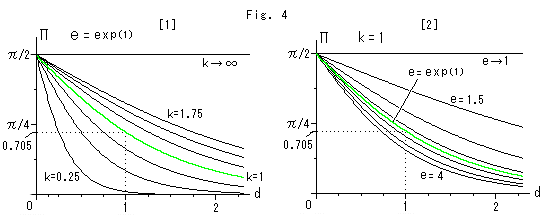
Let us combine k and e into new symbol C. The formula (1) of parallel angle can be rewritten by using C as
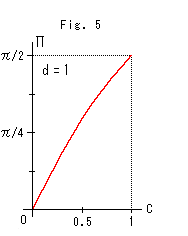
What will happen when C changes? The movable area of C is 0 < C < 1 .
Fig. 5 shows how parallel angle ![]() dpends on C.
dpends on C. ![]() is almost in proportion to C, isn't it?
is almost in proportion to C, isn't it?
Fig. 6 below shows k and e when C is chosen.
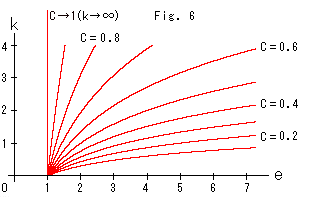
Thus we have seen relations among k, e and parallel angle ![]() . At this moment, we cannot help but say "that's all" though we learned how they work. However, we feel that they may have some connection with what is called curvature or metric. We will se later on.
. At this moment, we cannot help but say "that's all" though we learned how they work. However, we feel that they may have some connection with what is called curvature or metric. We will se later on.